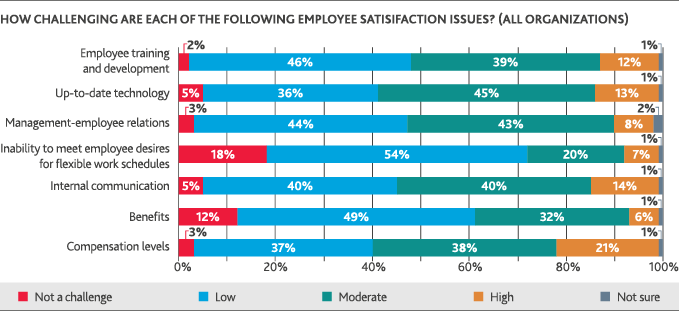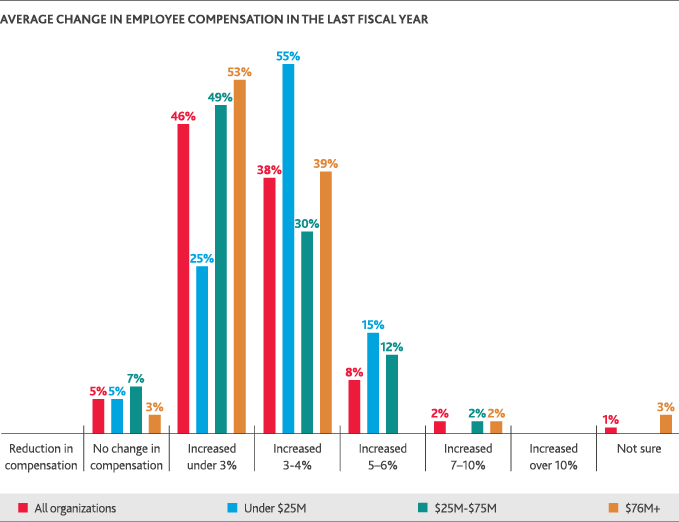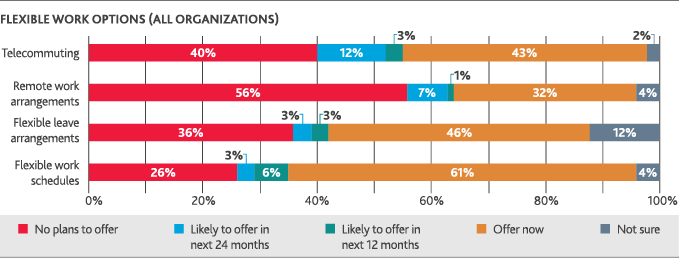Human Resources
Staff Retention and Recruitment
A strong workforce is an essential element of any effective nonprofit organization. Staff retention and recruitment continues to be a key priority and obstacle for the sector, cited as a high or moderate challenge by 60 percent of respondents. While the clear majority of large and upper-midrange organizations consider retention and recruitment to be a high or moderate challenge, surprisingly, half of midrange organizations say that it is a low-level challenge.

Employee Satisfaction Issues
As nonprofit executives evaluate employee satisfaction issues, maintaining competitive compensation levels is
the leading challenge. Nearly one-quarter (21 percent) consider compensation to be a high-level challenge. An additional 38 percent say it is a moderate-level challenge. Among upper-midrange organizations, compensation is a larger challenge—marked as a high-level challenge by 28 percent and a moderate challenge by 42 percent.
Availability of up-to-date technology is the second-leading employee satisfaction issue, ranked by 58 percent of nonprofits as a high- or moderate-level challenge. Additional top challenges include internal communication (54 percent), management-employee relations (51 percent), and employee training and development (51 percent).

Compensation
When it comes to compensation levels, overall a plurality of nonprofits (46 percent) increased employee compensation at a rate of under three percent. Another 38 percent increased compensation between 3 to 4 percent. No organizations increased over 10 percent.
Fifty-five percent of midrange organizations increased average employee compensation between 3 to 4 percent, indicating marginally larger increases than their larger counterparts.

Flexible Work Arrangements
For 18 percent of nonprofits, meeting employees’ demands for flexible work options is not a challenge. Another 54 percent consider it to be a low-level challenge. This likely reflects the fact that many organizations have flexible work policies already in place, and may feel they are adequately addressing employee demand.
The most commonly offered arrangement is flexible work schedules (61 percent), followed by flexible leave arrangements (46 percent), telecommuting (43 percent), and remote work arrangements (32 percent).

SHARE